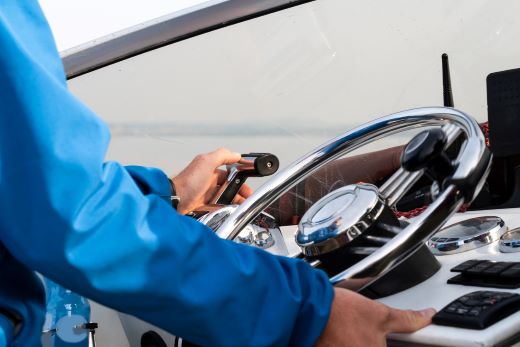While boat capacity and carriage requirements are incredibly important, some boaters aren’t entirely sure what they are. Boat capacity refers to how much weight your boat can safely carry, while boat carriage requirements state the necessary safety equipment boaters must have on board.
Failing to obey either poses severe consequences for yourself, your vessel, and your passengers. Keep reading for a comprehensive overview of boat capacity and boat carriage requirements.
Why Boat Capacity Is Important
Any sailor can tell you that understanding how to balance your boat is necessary for a smooth and enjoyable ride on the water. Overloading passengers or equipment throws off the vessel’s equilibrium – causing a ripple effect on the trim, plate, and wake. And in extreme cases, it can even lead to capsizing or swamping.
Believe it or not, the dangers of overloading your vessel aren’t always apparent. And unfortunately, some boaters don’t realize they’re in danger until they’re in a situation that requires a quick maneuver, and their vessel cannot respond appropriately.
To avoid getting into a dangerous situation, obey the load requirements on your boat’s capacity plate.
In addition to the weight of the boat’s passengers, remember that load includes the weight of motor sources and cargo.
Learn More About Capacity Plates
Boat Carriage Requirements
Boat carriage requirements refer to the necessary safety equipment (also referred to as carriage equipment) boaters are required to bring on board. And because there are different carriage requirements for different locations, you must familiarize yourself with federal and local requirements.
One of the most well-known requirements is having personal floatation devices (PFDs) for all your passengers on board. These PFDS — also called life jackets — are designed to keep individuals afloat in an emergency, and the exact type you need depends on your boat’s size:
- If your boat is smaller than 16 feet… You must have an approved type one, two, three, or five PFD for all passengers and ensure they fit properly.
- If you have a boat between 16 and 65 feet long… In addition to the lifejackets, you need a throwable type four device on board.
Additionally, all boaters should install an effective sound system on board. (Note that the bigger the boat, the bigger the sound.) This device allows you to communicate with other boats during emergencies and relay critical information. Similarly, when heading out on coastal waters, you’ll need a visual distress signal.
Most boats are also required to have a B-1 fire extinguisher on board. (Depending on your boat size, you might need additional B-1 or B-2 extinguishers.)
Boaters should also check their local requirements regarding a first aid kit, emergency fuel, water, a VHF radio, and a bilge pump. And, of course, remember that it is always better to be overprepared than underprepared.
Learn More About Bilge Pump Basics
Ventilation and Fuel Safety
Ventilation and fuel safety are necessary to create a safe boating environment. Not only does proper ventilation prevent hazards from occurring, but it is essential to cultivating a comfortable environment for your passengers.
The Coast Guard sets ventilation regulations and standards to ensure the safety of boaters, and those requirements vary depending on the manufacturing date of your boat.
To ensure your boat functions as it should, run the blower for four minutes before starting the engine. And if you ever encounter a strange odor when fueling, stop what you’re doing and check it out. Unpleasant odors are usually indicators of more significant problems.
Navigational Guidelines
It’s required for all boats over 40 feet in length to carry an updated copy of the ISDOTIS Coast Guard International Inland Navigation Rules and Regulation Handbook. If you aren’t already aware, this handbook is a comprehensive boating guide. And it outlines the rules and regulations governing boating activities in both international and inland waters.
Be Prepared
To enjoy your boating experience fully, you should minimize stress by coming well-prepared. Remember that the people and things you bring on board are your greatest tools.
So, choose wisely and come prepared whenever capacity or carriage is in question. Don’t overload your boat — with people or supplies — and make sure all the necessary safety equipment is on board. Familiarize yourself with the federal and local regulations, and remember that it is always better to be overprepared.
Your Boating Resource Guide
Are you interested in more safety guides like this one? As experts in the industry, our Discover Boating team has everything you need to make the most of your boating experience.
From emergency tips to equipment recommendations (and everything in between), visit our Boating Blog for more information.
This article and video are sponsored by Progressive Insurance®


